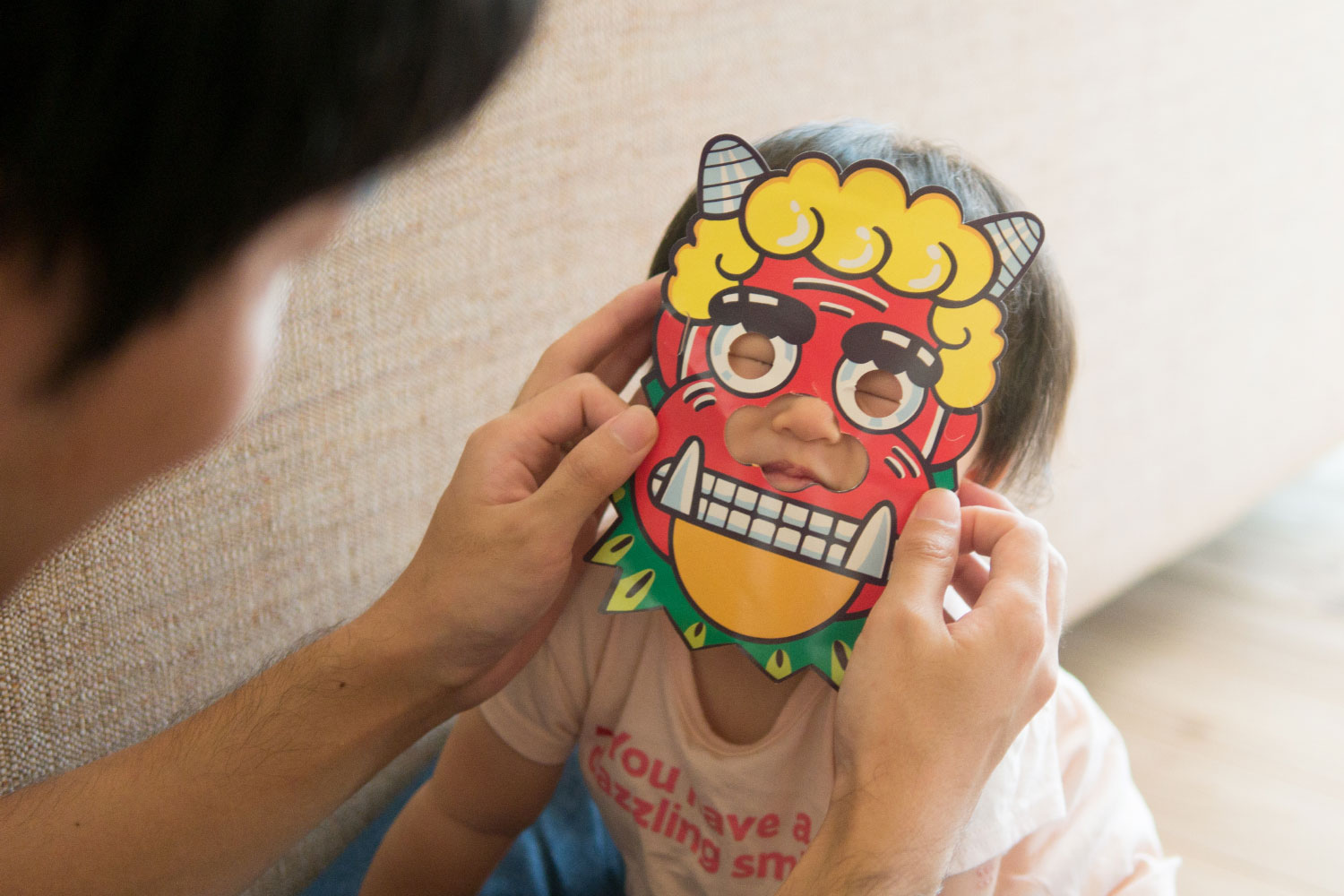

SETSUBUN, OR THE BEAN-THROWING FESTIVAL AT THE END OF WINTER
Door decorated with fish and garlic
According to the Japanese lunar calendar, Setsubun no hi (節分の日) takes place one day before the beginning of spring – on 3 February. In the past, at the beginning of February, the entrance doors were decorated with fish and sardines. To reinforce the unpleasant smell, people would also add Chinese chives and garlic. The practice originated from the ancient belief that garlic is a vampire killer. Set up around the entrance were also tamagushi (玉籤) – branches of the sakaki (賢木) tree, which is believed to be sacred in Shinto. All this to deter evil spirits and not let them inside. Today, those practices are rare.
Mamemaki – bean throwing and eating
Mamemaki (豆まき) is the most popular custom of Setsubun. It means throwing roasted fortune beans, or fuku mame (福豆), at each other. You have to eat one seed for each year of your life. This is to bring luck and health in the upcoming year. The custom is observed mostly by children and teenagers as the bean quantities to be eaten by them seem reasonable. Older people could have stomach problems if they ate several dozen of those. Especially considering that the Japanese are among the longest living nations on earth.
Mamemaki legend has it…
that once upon a time an ugly ogre disguised himself to enter the house of an old widow. He had a magic mallet and he used it to conjure a beautiful kimono. The widow loved how the ogre looked and decided to get him drunk to steal his clothes. Her greed was so great that in addition to the kimono, she also wanted to take the mallet. The ogre was surprised with the avarice of the old widow and decided to reveal his true self. The women got very scared. Hysterical, she started to throw anything she had at hand at the ogre. She reached for soy beans, which turned out to be her greatest weapon because their strikes were so painful that the ogre fled. The widow got wiser and was no longer so greedy.
Toshiotoko – man of the year
Toshiotoko (年男) means ‘man of the year,’ and in the context of the Japanese spring festival, it denotes the person who dresses as the demon to scare the family members. It is usually the head of the household or someone who was born on the corresponding animal year on the Chinese zodiac sign. Pig (boar) is the last of Chinese signs, anticipated for 2019, believed to bring closure to the affairs that people have dealt with over the past 12 years. Toshiotoko’s costume usually consists of red mask with horns and large yellow and black eyes, known as namahage (生剝). In fear of their fate, the family members want to drive the demon away from the house and so they toss beans at him, shouting: Oni wa soto! Fuku wa uchi! (鬼は外! 福は内), which means: “Demons outside, fortune inside (the house).”
The marketing dimension of Setsubun
The beginning of spring is a festive event in Japan. It is a day of numerous rituals, celebrations, festivals and attractions. Crowds gather mainly around temples. Bigger cities set up platforms for actors, singers and various other stars. Japanese celebrities, not infrequently accompanied by people dressed as superheroes, throw more than beans at the crowds. Even though the legumes are there as well, the air is filled, for promotional purposes, with packets of cereal, crisps or other treats. Those who are in luck may catch a winning lottery ticket.
Staring from the shop shelves are the blindingly red namahage masks, sharing the space with tonnes of various beans, both sweet and salty. It is also a Black Friday for nori-maki, with cooking shows and blogs offering more and more sophisticated methods to prepare them.
Ehomaki – fortune rolls
Almost every major festival has its own traditional main course. Setsubun is no different. On 3 February, everyone should eat ehomaki (恵方巻) – is a fortune roll. It is as important for Setsubun as a turkey in the USA for Thanksgiving. One should eat the thick 20-centimetre long nori-maki in complete silence, facing the direction that is fortunate for that particular year. This is to ensure longevity, health and success in business ventures. The challenge of making ehomaki is to fill it with 7 colours. The number in its own denotes luck, and each of the colours symbolises one of the seven gods of fortune.
Considering how often the Japanese celebrate various holidays and how important the related traditions are to them, no wonder they enjoy long lives. Especially since many of the rituals and ceremonies are related to vitality and health.














